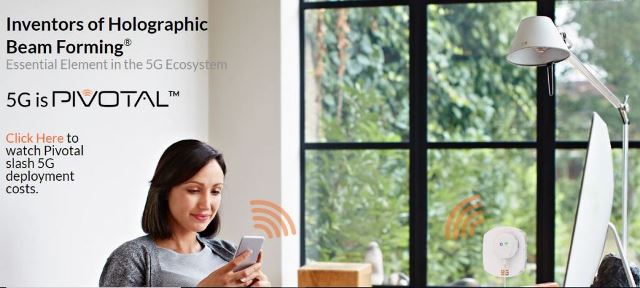Pivotal Commware has revealed how mobile operators can use Echo 5G and Pivot 5G repeaters to increase indoor 5G mmWave coverage while reducing deployment costs.
 This analysis – shown via a video and whitepaper — proves that the $100 billion pay TV market is within the grasp of mobile network operators.
This analysis – shown via a video and whitepaper — proves that the $100 billion pay TV market is within the grasp of mobile network operators.
Pivotal modelled a one square kilometer American suburb with seven 3-sector base stations deployed in locations determined by standard radio network planning software to establish a baseline.
Pivotal augmented the network by adding more gNodeBs (gNB) and contrasting that with the deployment of Echo 5G and Pivot 5G repeaters. The incremental cost per subscriber of adding Echoes and Pivots to achieve 80 percent indoor coverage was $468, versus $1,822 to achieve the same coverage from 21 more gNBs alone.
“Criticism has mounted regarding the cost and projected ROI for network operators putting a significant stake in mmWave, but our simulation tells a different story,” said Brian Deutsch, CEO of Pivotal Commware.
Sub-6 GHz bands, which have been suggested as the better option, are limited and will lead to expensive network densification to meet subscriber expectations over time.
“mmWave offers a leap forward in user experience from the beginning, and when deployed in conjunction with our HBF repeater technology, operators can increase subscriber reach while better managing network economics, thus minimizing the need to over-deploy costly, fiber-connected gNBs,” Brian Deutsch said.
Pivotal repeaters delivered speeds in excess of 1.7 Gbps in a demonstration at Super Bowl 2020. The Echo 5G is a self-installable precision beamforming indoor repeater designed to counteract the mmWave penetration, reflection, and structural shadowing losses so it can flood an interior with mmWave signal.
The Pivot 5G outdoor repeater captures and redirects mmWave signals around obstacles like buildings to extend the range of gNBs. The Pivot 5G reduces Capex, Opex, siting costs and deployment time due to its small size, easy permitting, low power consumption and no requirement for fiber.





